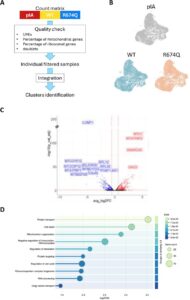
Last month, the UK Supreme Court ruled that the legal definition of a woman is based on biological sex. Snippets are not the place for discussing legal rulings and their ramifications, but I want to focus on one quote from the decision: “the concept of sex is binary, a person is either a woman or a man”. Such simplicity might be convenient in terms of legal clarity but is at odds with the reality of human biology. Biological sex is by no means strictly binary: for example, intersex people are born with physical sex characteristics that do not fit typical definitions of male or female. A vast array of “differences in sex development” (DSDs) often underlie such variation, with much remaining to be discovered about the biological mechanisms. A recent preprint from the Institut Pasteur in France sheds light on a DSD called 46,XY sex-reversal, whereby an individual with male chromosomes develops female genitalia and reproductive structures. DHX37, a gene encoding an RNA helicase, is one of several genes implicated in 46,XY sex-reversal. Among other experiments, the authors analyzed RNA transcripts physically interacting with wild-type and mutant DHX37 proteins, providing insights into how DHX37 mutations might disrupt early testicular development. Such studies will help unravel the vast natural variation in sex development, hopefully changing oversimplified ‘either/or’ views of sex.
Altered RNA-processing provides a mechanistic framework delineating human sex-reversal associated with pathogenic variants in the RNA-helicase DHX37
In bioRxiv, 13 January 2025
From the group of Anu Bashamboo
Snippet by Katrina Woolcock
Image credit: Figure 4A-4D from Elzaiat et al. linked above (CC-BY)